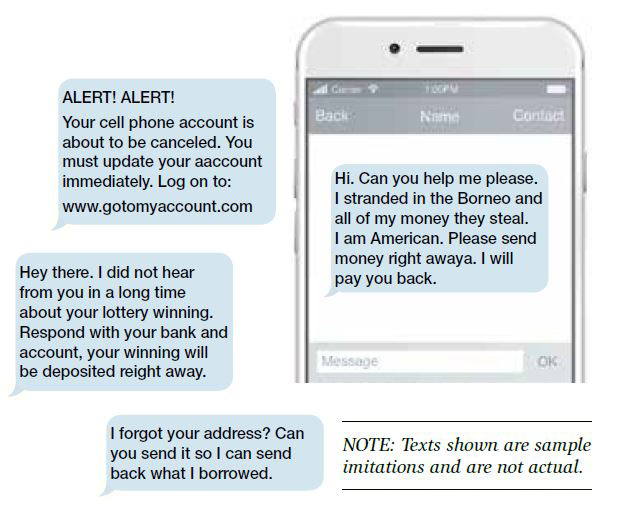There’s been a marked increase in text messages with a spoofed Caller ID that ask the recipient to click on a hyperlink — that’s always the objective of this type of scam. It is their methodology to hijack your device.
- The recipient does not know who really sent the message.
- The hyperlink may redirect the message recipient to a website where malicious software may compromise the recipient’s cellphone.
These programs may allow “spying” on your calls and text messages, and stealing personal and financial information and passwords. The program may even take control of the cell phone’s functions, such as the camera and/or microphone.
Signs of Caller ID Spoofing
- If the message is written using bad grammar and/or misspelling.
- The message creates a sense of urgency and demands an immediate response.
- The Caller ID is not in your address book — a big red flag!
You should never respond to a text message from an unknown sender.
Prevention Tips
- Keep your address book current to include financial services you use regularly.
- If you receive a text message with a hyperlink, do not click on it until you can determine it is legitimate. Use Google to determine the validity of the web address in the text message. Do the same with the Caller ID of the sender.
- If neither is legit, do not reply to the sender and/or click on the hyperlink.
- If it is legit, contact the sender of the message through other means; do not reply to the text message. If it is a company, find its contact phone number and call them to verify that they sent the message.
THE DEPARTMENT OF THE PROSECUTING ATTORNEY
1060 Richards St., Honolulu HI 96813
808-768-7400 | Office hrs: Mon – Fri, 7:45 am – 4:30 pm
www.honoluluprosecutor.org/contact-us/



Leave a Reply